One of the first steps in Debbie Young’s bungalow vignette instructions is to complete the flooring before gluing the house together. Initially I ignored that, because I’m used to adding flooring once the house is assembled. But then I dry fit the pieces and discovered there’s a gap below the bottom of the door.
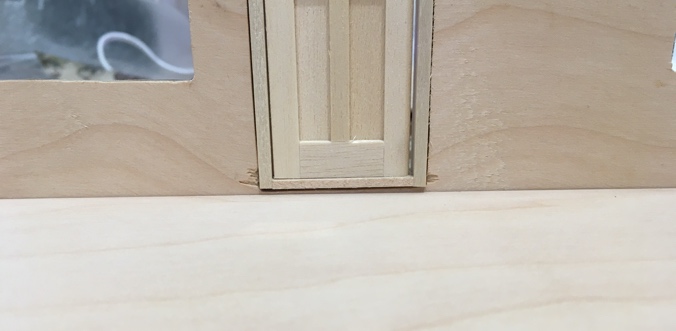
I didn’t touch the door hole when I enlarged the window holes, so this is by design. A little odd, but nothing some tall floorboards can’t fix.
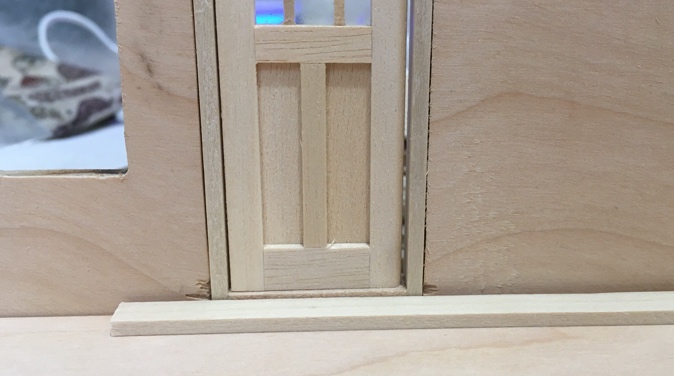
These are 1/4″ by 1/8″ sticks of some kind of wood that’s nicer than basswood, that I acquired a while back from a miniaturist who was clearing out her stash. I’ve pilfered a few pieces for other uses, and I actually used two of these to form sides of the new door frame. I pulled out the rest of what I had and it wasn’t quite enough to cover the floor.
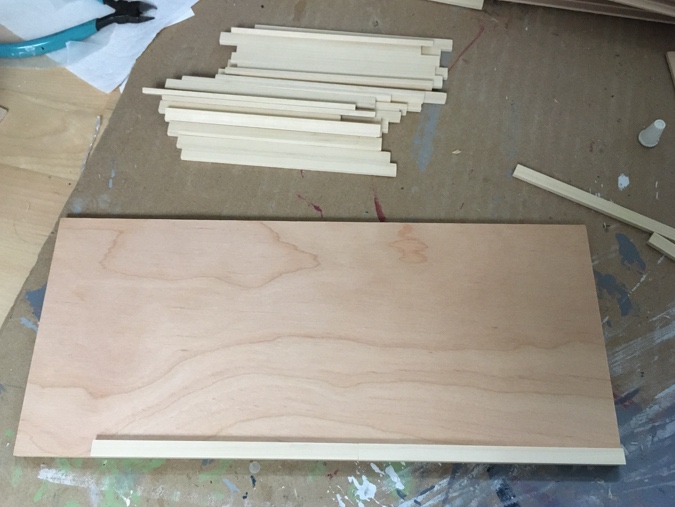
I dug through my scrap drawer and found a few more pieces, and it seemed like I would have *just* enough to cover the floor. I’d already glued boards to about 2/3 of the floor when I laid out the rest, and this is how it ended up. The piece hanging off the edge is not quite big enough to fill the remaining gaps. Argh!
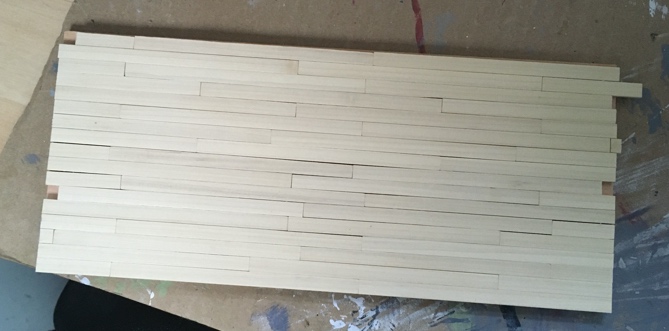
Since the gaps were small, I knew I could fill them up with regular basswood and they would more or less blend in. But first I tore through my workshop just in case there was a stray board lying around… and I found one!
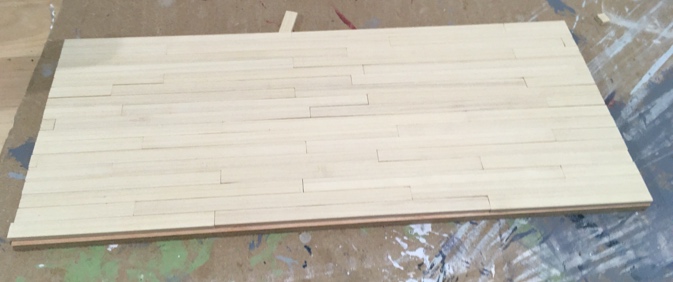
I used a skinny piece of basswood for the final strip. This edge will be inside the house and will have a baseboard over it, so it shouldn’t be noticeable if it takes the stain differently than the rest.
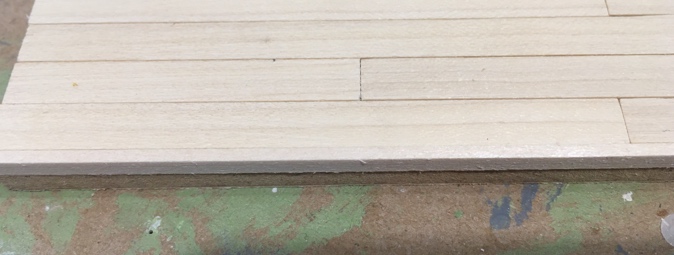
Like I mentioned, I usually lay floors once the house is already assembled, using veneer or, when I can find it, LittleWonders Lumber. But a while ago (ten years, yikes!) I took a class with the Guys from Texas and learned a great technique for finishing hardwood floors outside of the house.
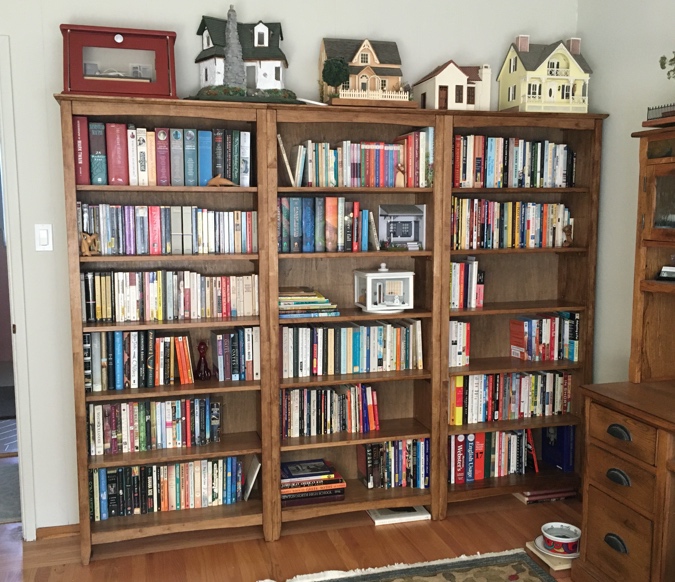
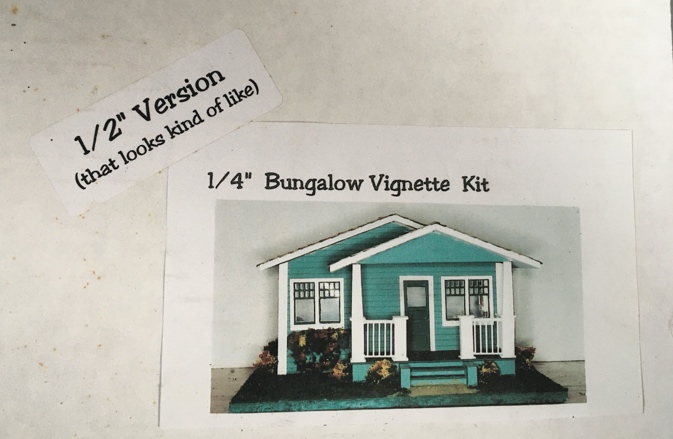

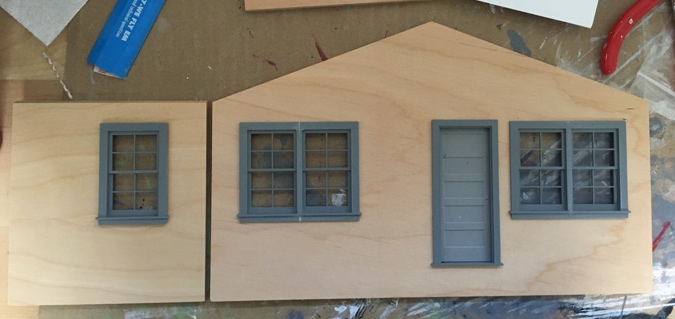
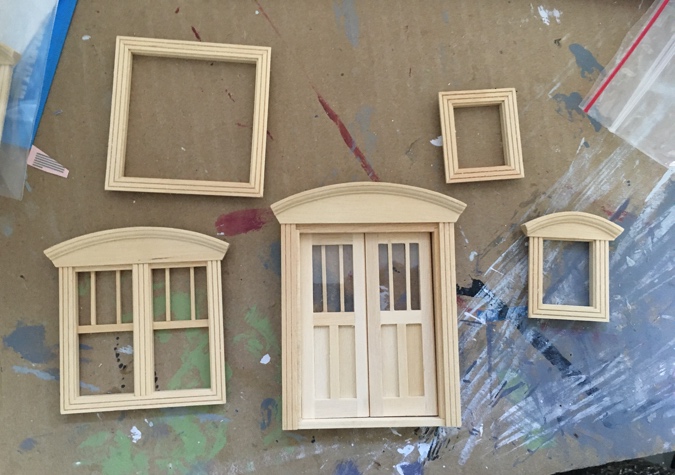
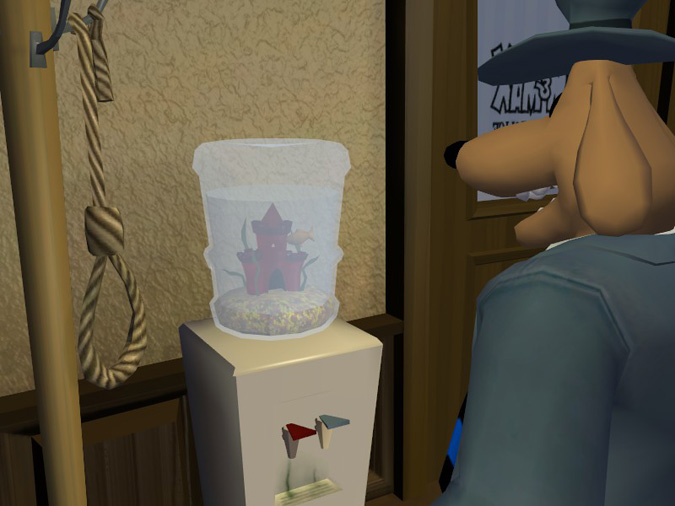
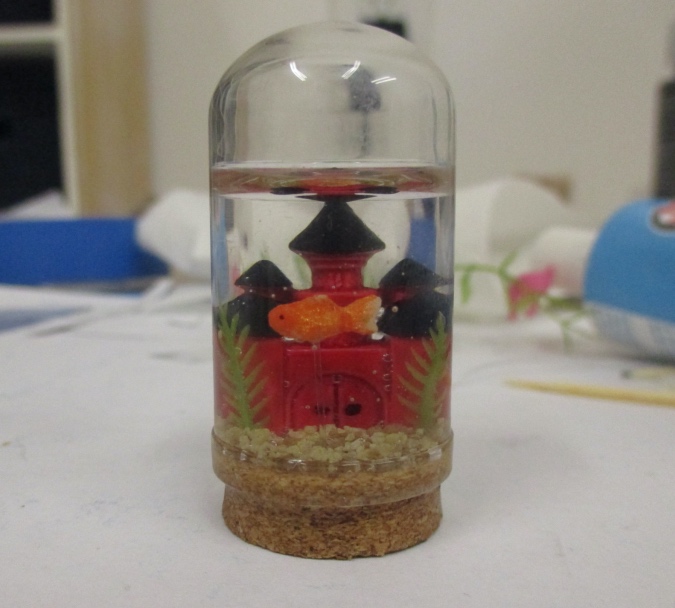
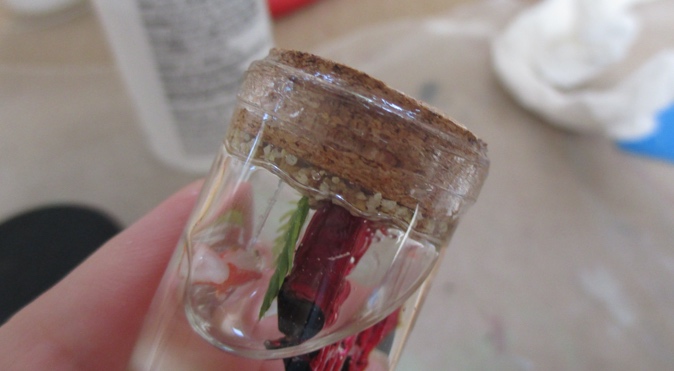


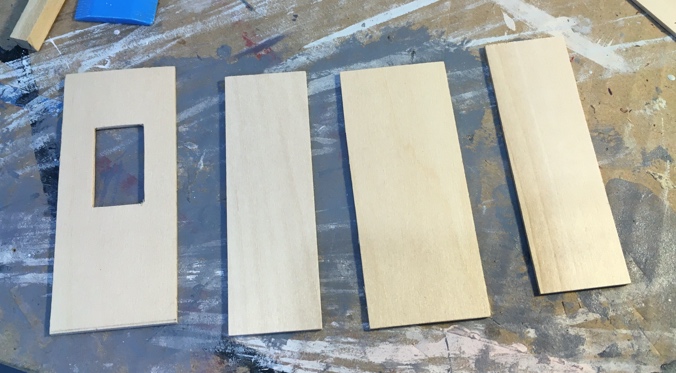
 Emily is a freelance writer, miniaturist, and adventure game enthusiast.
Emily is a freelance writer, miniaturist, and adventure game enthusiast.

